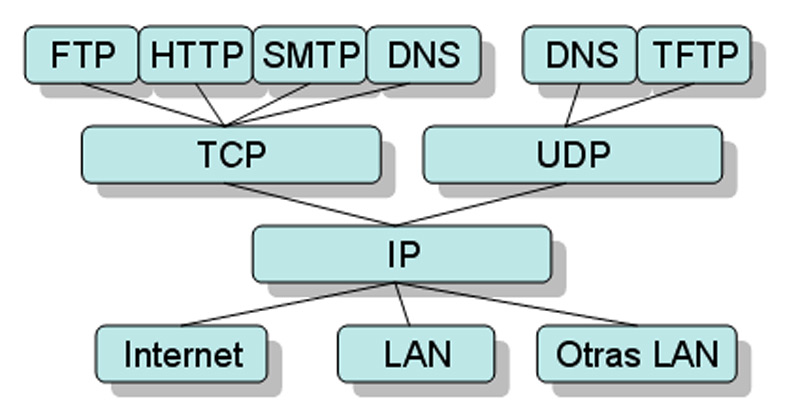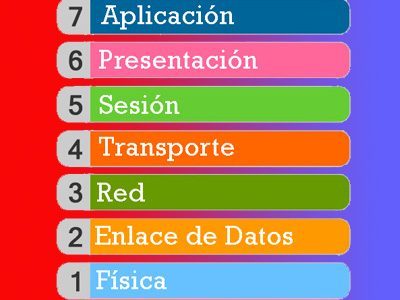
Index:
UPDATED ✅ Do you want to know what a Communications Protocol is and what it is used for in computing? ⭐ ENTER HERE ⭐ and Learn everything ✅ EASY and FAST
In communications between computers, there is what is known as computer networks. These are what allow each of the processes within a network to be executed in an orderly manner, making it possible to exchange information between computer systems.
The world of network protocols is truly interesting, since learning from it involves getting your hands dirty with the most essential concepts of digital communication On a technical level, of course.
In this article we are going to teach you the most important thing about network protocols, so that you can use it to study for your high school exam, or simply to expand your knowledge about it. So pay attention and go saving this entry among your favorites.
What is a network protocol and what is it used for in a computer system?
A network protocol is a set of rules established in a computer system that dictates the guidelines that must be fulfilled, to achieve effective communication between the nodes that make up said system. It is in a certain way like the rules of transit of the information that flows in the form of bits from one computer to another.

This is very important, since without them, the information that is transmitted would not be verified, which would mean that nothing guarantees that it arrives without errors. So, this becomes something like a means of communication; full of speculative information and dubious providence. But the most important thing is that the orders it contains would be misapplied, causing the applications that execute them to crash completely.
In a way, protocols are like supervisors: a quality control filter for the data that is transmitted on the network. Thanks to them, perfect harmony can be achieved throughout the computer systemin which everything works as it should be.
What are the main network protocols that exist in computing?
In the same computer network there are a tremendous number of protocols, naming them all would take us much more than an article here. But the most important and well-known will be named below:
internet-protocol
Possibly the best known. This is an unreliable data transport protocol. What it does is send data packets (datagrams) from one point of origin to another destinationlimited to this and not to guarantee that the packages are delivered.
This basic concept is the basis of Internet communications. Since it gives your computer an address (IP address) and gives it the ability to send (upload) and receive (download) data. There are two known versions of this protocol, IPv4 and IPv6, and the main difference between one and the other is the number of addresses it can assign.
ARP
Less known but very important. It works in conjunction with the Internet protocol version 4, and is responsible for assigning IPv4 addresses to the corresponding computers. It is a simple task, but it makes things much easier. Its initials correspond to Address Resolution Protocol or address resolution protocol.
However, one of its weaknesses is that it does not verify that the addresses it assigns are correct, which leaves room for errors.
ND Protocol
This protocol has exactly the same function as the previous one, but in this case it is responsible for assigning IPv6 addresses. This allows a computer to join the local networkbeing a link for datagrams to reach it.
ICMP
This is another protocol that works in conjunction with the Internet protocol. It is known as Internet Control Message Protocol or Internet Control Message Protocol, and this is responsible for sending notifications and error messagesreporting scenarios such as the host being unreachable or a service no longer available at the time of your request.
TCP
This protocol is mounted on top of IP, which means that both are often known by the name TCP/IP. This has exactly the same function, since what it is responsible for is transporting data from one point to another, with the difference that each data adds a checksum or verification sum to ensure the reliability of the transmitted data.
Its initials correspond to Transmission Control Protocol or transmission control protocol.
PDU
This is a protocol very similar to the previous one, but it is responsible for the transmission of data in local networks of the same user, without depending on an Internet connection. Like the IP, it does not guarantee that the data will be received, but this in turn speeds up communications on the network.
What is OSI classification? What are all the layers that make up this communications protocol?
In the world of network protocols, there is a reference model known as OSI classification, which is a standard created by the World Organization for Standardization (ISO) in the 1980s, which determines a basic scheme on which the different protocols that exist. This is not the only one out there, IBM also created its own System Network Architecture (SNA), but the OSI is still the most popular.

This model consists of 7 layers with different functions that allow communication in a network to be 100% effective. The user only interacts with 2 of them: the first and the last respectively, since the others occur at the system level.
Here we present each of them:
Layer 1 (Physical level)
The physical layer is the one that is worth the redundancy, It is composed of all the physical elements of the network, from the machines or computers, to the cables and routers.. This also encompasses the concept of network topology, which is nothing more than the way in which a network is structured to facilitate communications in it.
This is the layer with which the user has the most interactionand it is even said that it is the only one since the seventh layer, the application layer, is not executed by it but by software that it uses in this first physical layer.
Layer 2 (Link Layer)
Known as the data link layer. It works between the physical components and the network (layer 3). It is responsible for processing, verifying and confirming the data issued at level 1 of the OSI model.to later send them to level 3, which is where the process of sending and receiving information between computers really begins.
This layer is essential, since is a filter to ensure that the data entering the network is correctbecause the protocols of the network layer, in most cases, will not be able to do it because it would reduce the fluidity of their transport.
Layer 3 (Network Layer)
This layer is where most of the protocols mentioned above coexist. It is responsible for getting data from a source to its destination.regardless of whether both points where are connected directly or whether there is a device “intermediary” Between both.
The most important element of this is the Internet Protocol (IP) that we already explained to you in the previous point, and works in conjunction with hundreds of other protocols.
Layer 4 (Transport level)
It is often confused with the previous one, since it has almost the same function in transporting the data from one IP address to another within a network with or without connection to Internet. To do this, it uses the TCP (with connection) and UDP (without connection) protocols, which work on the Internet protocol or IP. What this does is that it makes the data independent of the network layer, to make its transmission from source to destination much faster.
Layer 5 (Session level)
Every time an exchange of information between computers, what is known as a “session” is opened. This level is responsible for keeping the session open while the data exchange is carried out.otherwise it could not be completed and communication on the network would be completely impossible.
It is also capable of resuming a session in the event of an unexpected interruption, picking it up from the exact point at which it was interrupted.
Layer 6 (Presentation Level)
This is one of the most important layers. All the data or datagrams that travel on a network are simple binary numbers, impossible for a normal person to understand. What is done at this level is that data is interpreted and rewritten so that applications and users can understand it.
Basically, it is the one that allows you to see an image that you download while browsing the Internet, despite the fact that for the network it was a bunch of zeros and ones. In essence, it is a data translator.
Layer 7 (Application Level)
Finally, there is the application level, which is what allows programs use the information generated in the network for later execution.
networks